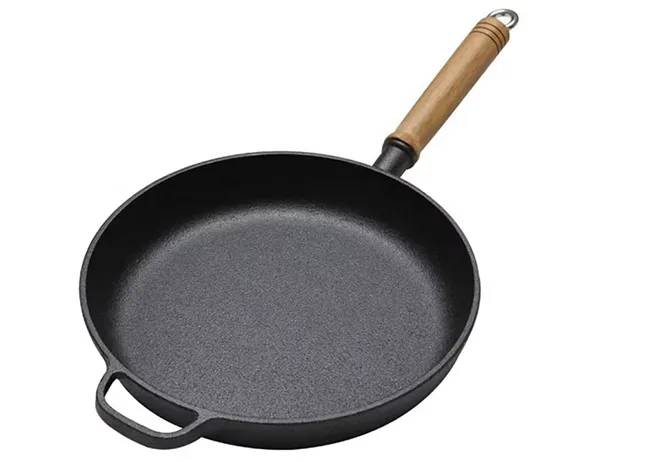
cast iron tawa seasoning
Seasoning a Cast Iron Tawa A Comprehensive Guide
Cast iron cookware has been a staple in kitchens around the world for centuries, known for its durability, heat retention, and unique ability to improve the flavor of food over time. One specific item, the cast iron tawa, is particularly revered in Indian and other South Asian cuisines for tasks such as making chapatis, dosas, and pancakes. However, to maximize the benefits of your cast iron tawa, proper seasoning is essential. Seasoning not only enhances the non-stick qualities of the tawa but also protects it from rusting and other elements, ensuring it lasts for generations.
What is Seasoning?
Seasoning refers to the process of applying a layer of fat to the cast iron surface and then heating it to create a polymerized layer. This layer creates a protective coating that enhances the cookware’s non-stick properties and prevents food from adhering to the surface during cooking. Over time, with repeated use, the seasoning builds up, improving the cooking experience and flavor profile of the dishes prepared.
Choosing the Right Oil
The first step in seasoning your cast iron tawa is selecting the right oil. Generally, oils with a high smoke point are ideal, as they can withstand the heating process without producing smoke or burning. Some popular options include flaxseed oil, grapeseed oil, and canola oil. Flaxseed oil is particularly favored for its ability to create a durable, hard seasoning layer, while vegetable oil or shortening can also work effectively.
Step-by-Step Seasoning Process
1. Clean the Tawa Start by thoroughly cleaning your cast iron tawa. If it is new, it may come with a factory seasoning that needs to be removed. Use warm, soapy water and a brush or sponge to scrub the surface. For older tawas, use a mild abrasive like salt to remove any stuck-on food or rust. Rinse and dry it completely.
cast iron tawa seasoning

2. Apply Oil Once the tawa is dry, pour a small amount of your chosen oil onto the surface. Using a paper towel or cloth, spread the oil evenly over the entire surface, including the bottom and the handle. The goal is to create a thin, even layer; excess oil can lead to a sticky finish.
3. Heat the Tawa Preheat your oven to around 450°F (232°C). Place the oiled tawa upside down on the center rack of the oven. To catch any drips, place a baking sheet or foil on the lower rack. Bake the tawa for about one hour. This high heat will allow the oil to polymerize and bond to the cast iron, creating a robust seasoning.
4. Cool Down After one hour, turn off the oven and let the tawa cool inside the oven. This gradual cooling process helps to set the seasoning more effectively.
5. Repeat if Necessary For optimal results, especially for a new cast iron tawa, consider repeating the oil application and heating process two or three times to build up a strong seasoning layer.
Maintaining Your Seasoned Tawa
To keep your cast iron tawa in excellent shape, avoid using soap when cleaning; instead, use hot water and a soft brush. After washing, dry it thoroughly, and apply a thin layer of oil to prevent rust. Regular cooking with oil will naturally enhance the seasoning over time, ensuring excellent cooking results.
In conclusion, seasoning your cast iron tawa is a crucial step towards achieving the best cooking experience. With the right techniques and maintenance, your tawa will provide delicious meals for years to come, making it an invaluable addition to your kitchen. Whether you're cooking traditional Indian dishes or experimenting with new recipes, a well-seasoned cast iron tawa will enhance both the cooking process and the flavors of your food.
-
Season Cast Iron Perfectly with GPT-4 Turbo TipsNewsAug.01,2025
-
High Quality Cast Iron Cookware - Baixiang County Zhongda MachineryNewsAug.01,2025
-
Premium Cast Iron Pan: Durable & Perfect HeatNewsAug.01,2025
-
High Quality Kitchen Durable Black Round Cast Iron Cookware Pancake Crepe Pan-Baixiang County Zhongda Machinery Manufacturing Co., Ltd.NewsAug.01,2025
-
Cast Iron Cookware - Baixiang County Zhongda Machinery | Nonstick, Heat ResistanceNewsAug.01,2025
-
High Quality Kitchen Durable Black Round Cast Iron Cookware - Baixiang County Zhongda Machinery | Non-Stick, Heat Retention, DurableNewsJul.31,2025


